NB I take no responsibility should you stuff up or if something goes wrong from reading or copying this
This chain replacement has come about by the lack of maintenance by the previous owner resulting in two tight spots in the old chain that no amount of lube or adjustment could fix, so rather than do damage to the output shaft / seal a full replacement was required & as you have been told before a new chain calls for new sprockets as well.
Please don’t skimp on quality of your chain, you don’t want to be back here in a hurry.
First step is have the tools ready, you don’t want to get caught out having to wait a day or two because you were not ready for the job, especially if this is your commuter
Not everything is shown in the pic but the essentials are here
Angle grinder
Heavy-duty impact driver, (rattle gun) air is better than electric
High temp waterproof grease
WD 40
¼ inch socket set 8mm socket
½ inch socket set 8mm, 14mm, 27mm 32mm sockets
Old large screwdriver
Nail Punch
12mm open-ended socket
14mm open-ended socket
Chain breaker
12 KG steel bar / drift or similar
Missing are: Chain Press, Large Hammer

Chain Breaker & chain press
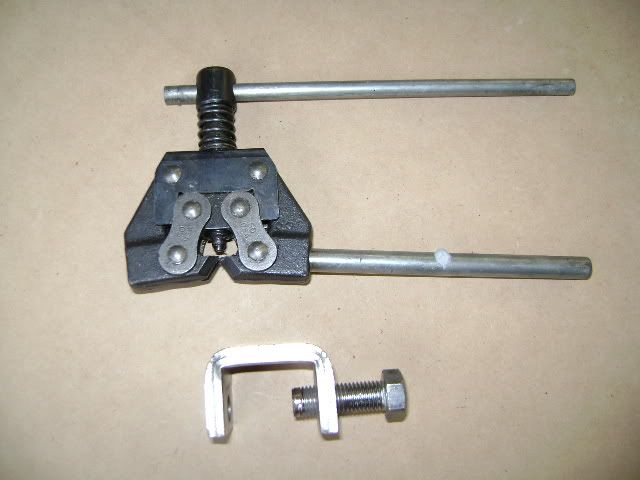
New Sprockets, & yes I could have gone alloy for the bling factor but these will last 5 times longer
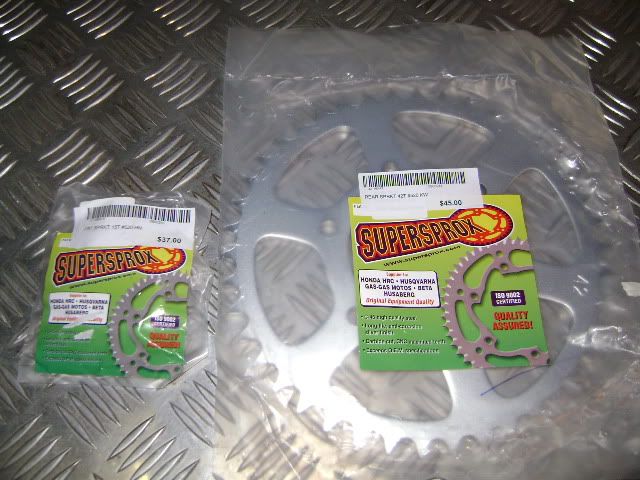
New Chain, as good as it gets
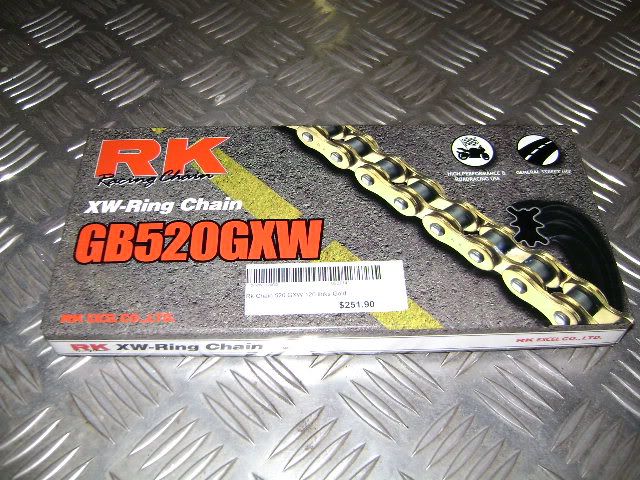
Place the bike on a stand, in this case I forgot to change over to the pick up knobs so the access is a bit tight but manageable. Start at the front as you will need the rear wheel & old chain fitted to remove the front sprocket-locking nut.
This is the front sprocket cover
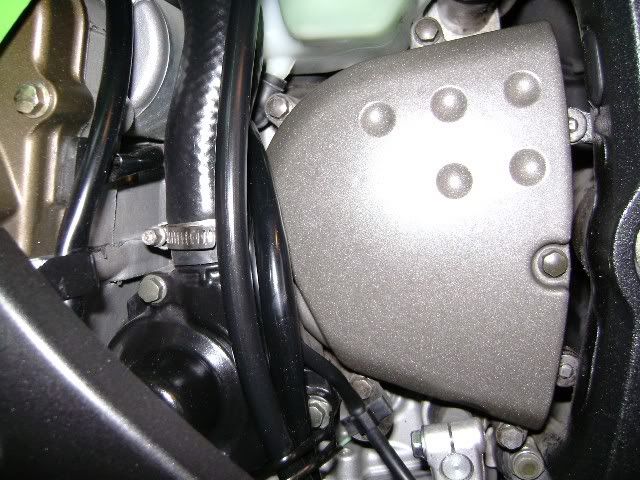
Remove the bolts holding the sprocket cover including the engine bolt with the hose clamp, the best tool for the job here is the ¼ inch socket set & 8mm socket… a standard ½ inch will be too bulky to fit behind the fairing lower & the socket will be too big to fit within the cover + can lead to rounded off bolt heads & a headache.
This socket set is a ripper going form a tiny size 4mm socket to 13mm socket
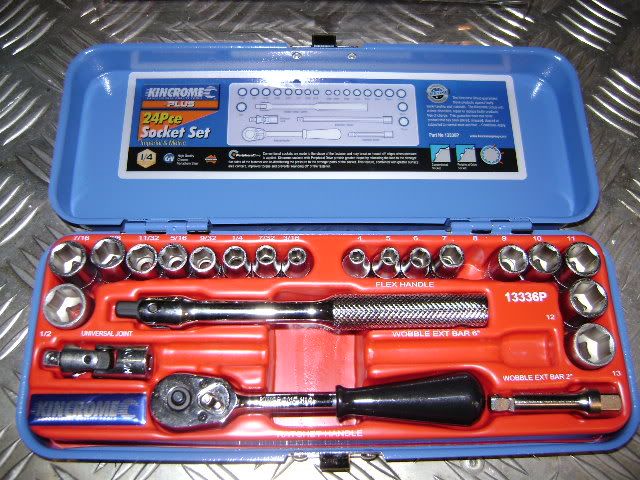
Taking out the engine bolt allows you to pull back the hoses for the removal of the sprocket cover without damage to the cover of frame, it’s a tight squeeze but it will come off.
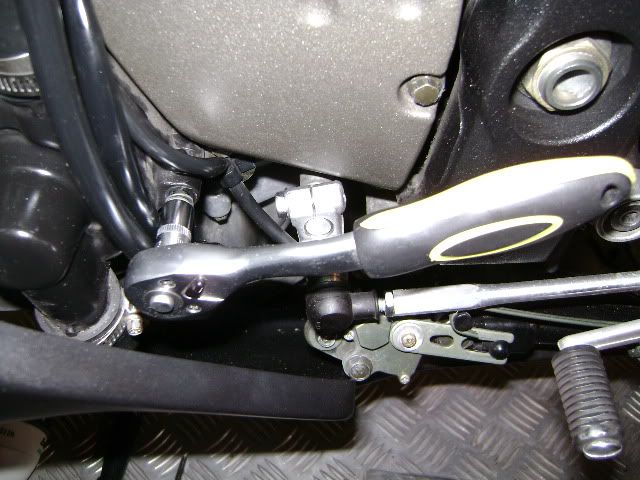
Fold back the locking Tab using an old screwdriver being careful not to hack up the washer as it can be reused
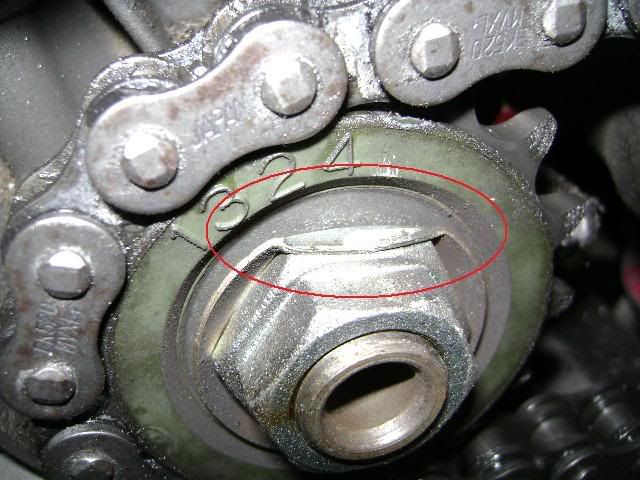
Now for the fun part put the bike in gear & have a helper depress the brake lever, using the impact wrench (rattle gun) with a 27mm socket to remove the locking nut, this will either work or not, in this case it worked because I use a heavy duty rattle gun.
If you are unlucky you may need a breaker bar for lots of leverage
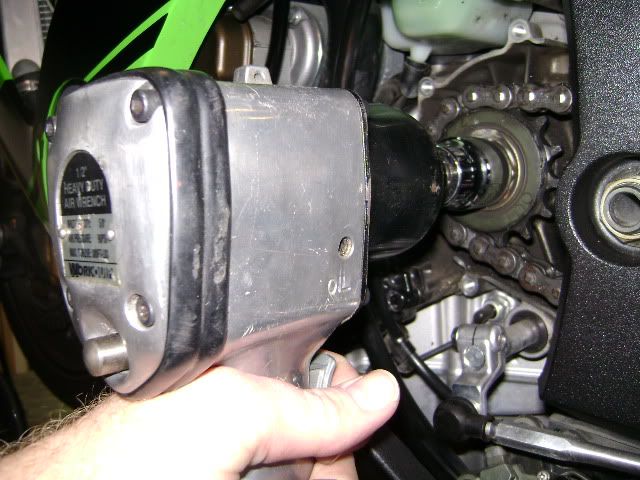
Remove the locking nut & washer, at this stage check that you have not damaged the washer too much & get a new one if need be, in this case I will reuse the original one
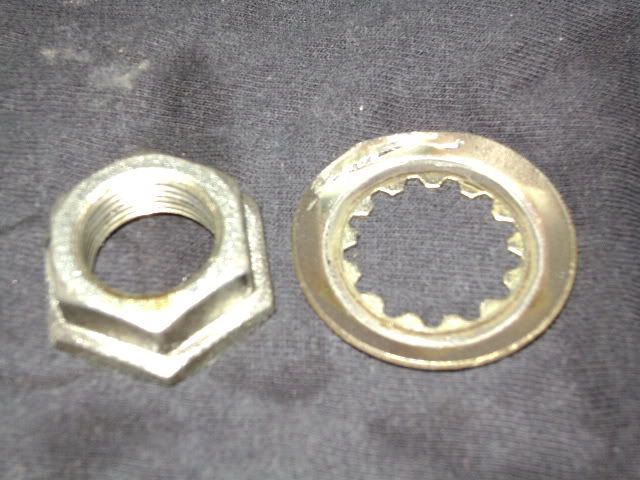
The cover will no doubt need to be cleaned of the build up of muck off the chain; this is what my cover looked like after 24,000 KM, really not as much build up as expected so the assumption about lack of maintenance was correct.
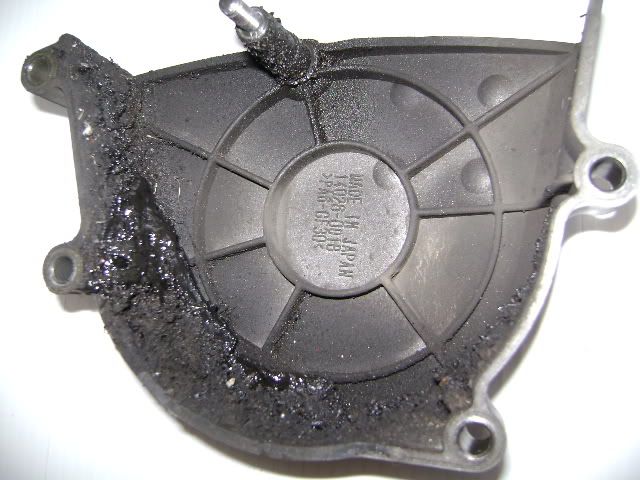
Don’t forget to clean around the output shaft using kero as it is gentle; please no solvents near the rubber seal!
I would also take the time to have a sticky & look for leaks or anything that looks out of place.
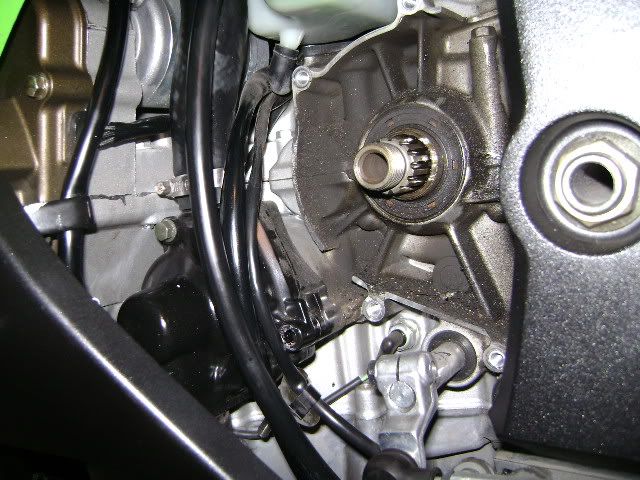
At this stage check that your new front sprocket is the correct size, no need to worry about the threaded holes as these sprockets are universal & some bikes use these holes to lock the sprocket

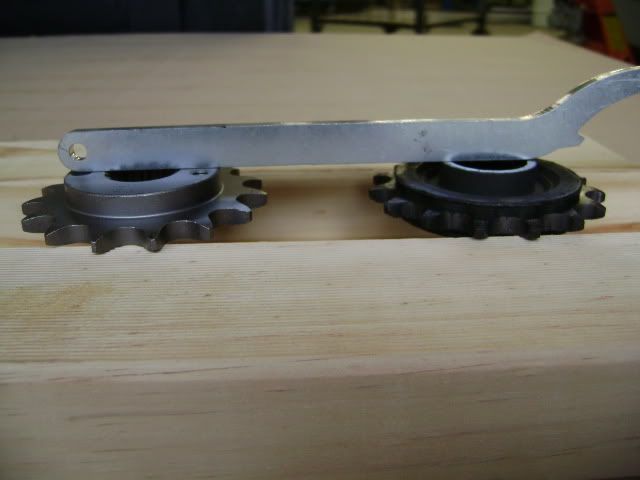
Fit the new front sprocket, washer & tighten the locking nut by hand, we will tighten further once the new chain is fitted
Now for the rear end, remove the split pin & using a 32mm socket remove the nut, washer & alignment block on the left hand side

Pull out the axel & check all pieces for wear or damage, then keep everything together so its all on hand & ready to go for installation, with the spacers you should have a grease mark on the end that sits in the rubber bearing seal
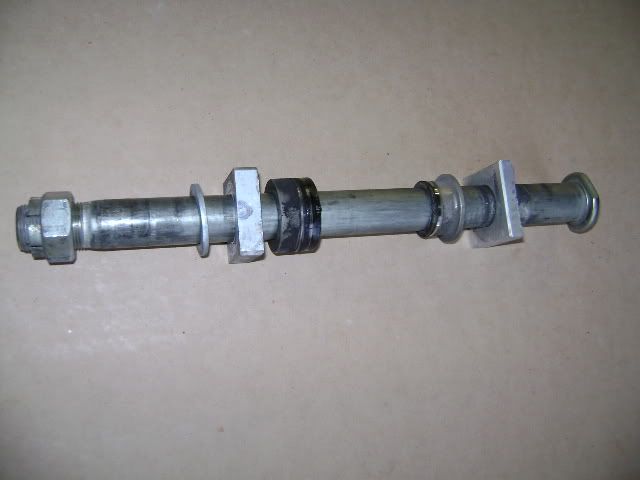
At this stage check that your rear sprocket is the correct size, in this case I have gone down a tooth for more top end, this small change should only just be noticeable
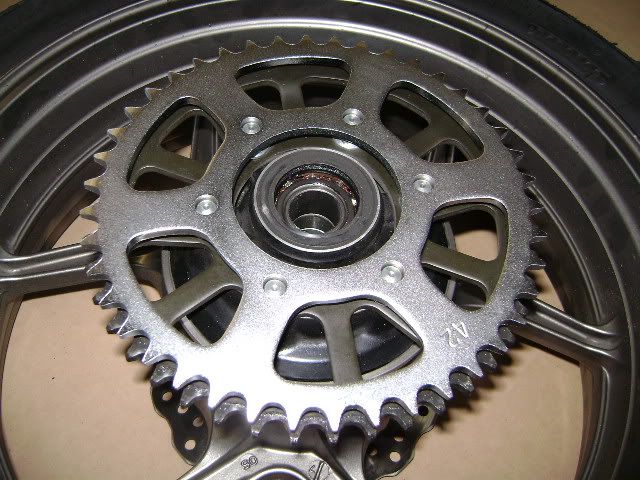
Remove the 14mm nuts holding the rear sprocket by hand… I stress by hand… as ages ago I did it using a rattle gun & one of the studs came out a few threads, it is a pain in the ass to get the studs back in so by hand is the safe way. Once the new sprocket is fitted you can tighten using the rattle gun & the best way is to work diagonally to ensure the sprocket is flat.
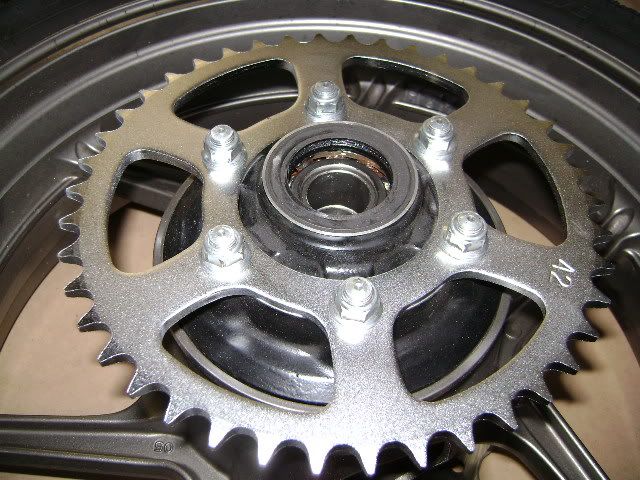
Next task is to split the old chain for removal, you could use the angle grinder for this but I prefer to do it the clean way using the chain breaker to push out the pins corresponding pins
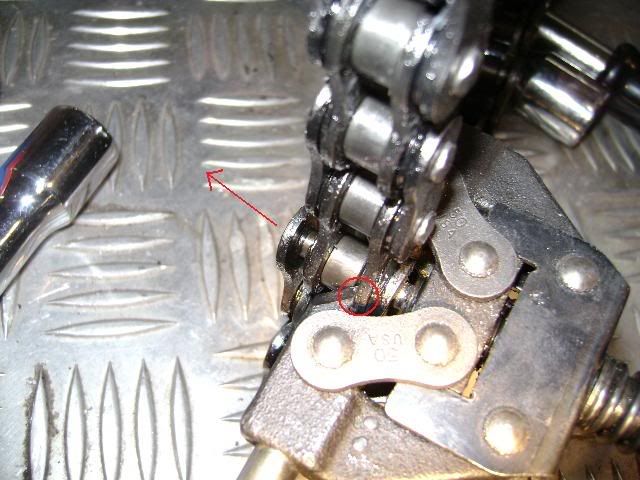
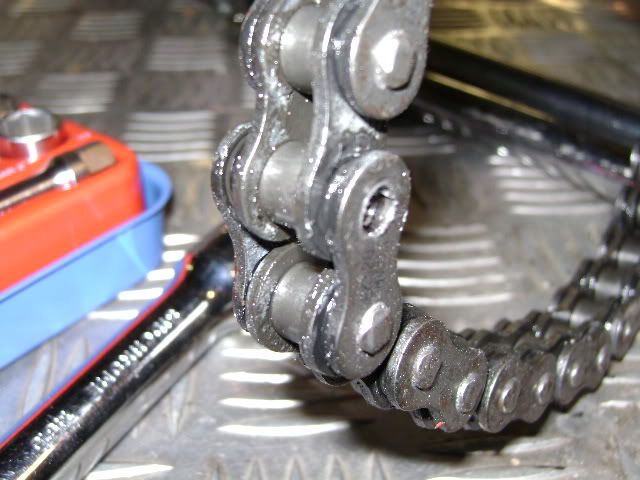
Fit the rear wheel spacers & axel making sure the adjusters on each side are facing the right way, lube up the adjusting bolts with WD40
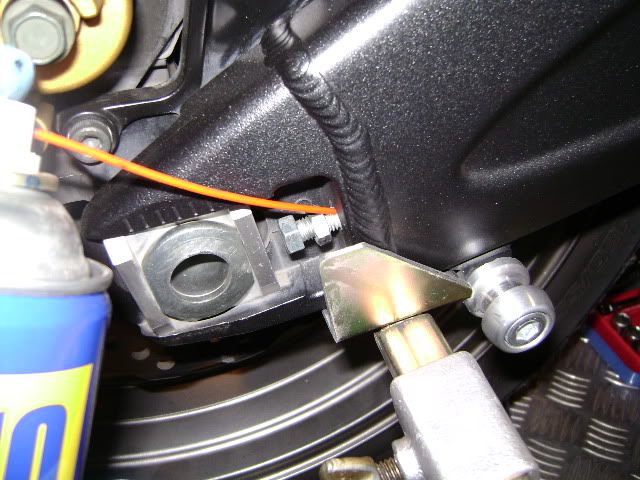
Screw in the bolts as far as they will go, this will allow you to work out the perfect length of your new chain
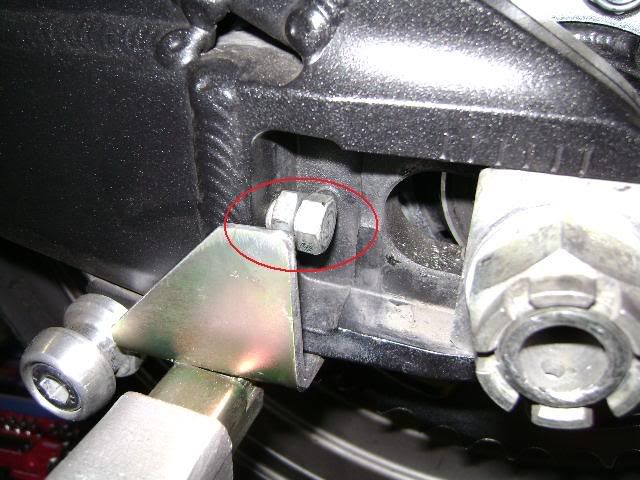
Place the chain around the sprockets & pull the rear wheel axel as far forward as possible & mark the chain where the two inner links meet up, please make sure that you don’t match up an inner & outer link as this will really stuff you up, double check the length & once you have found the pin you want to remove mark it with a texta or liquid paper
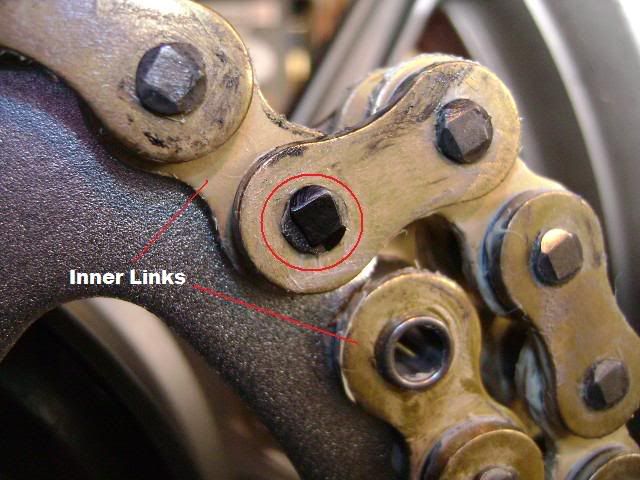
You now need to cut off the excess chain & for this I use an angle grinder to make sure the wanted links are not damaged, locate your marked pin & grind down the top until you can see the shaft outline
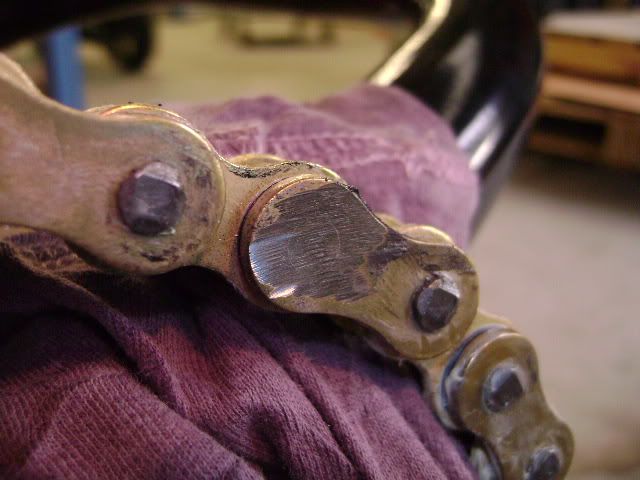
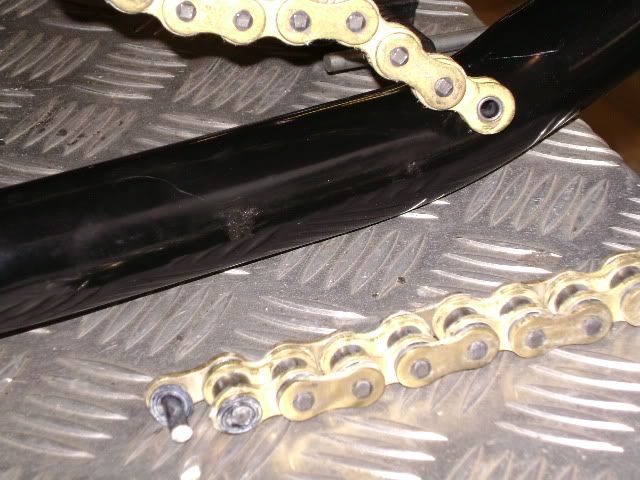
Here is the new length chain in place & ready to join
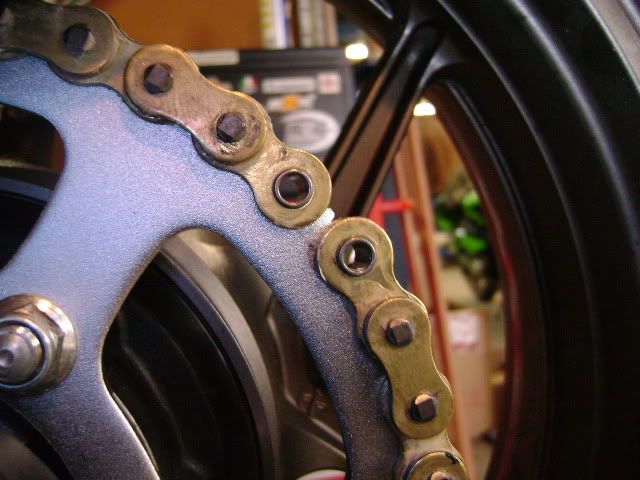
I prefer to use rivet links instead of clips as it is a more permanent joint, this joining link is supplied with the chain & has a complete set of X rings
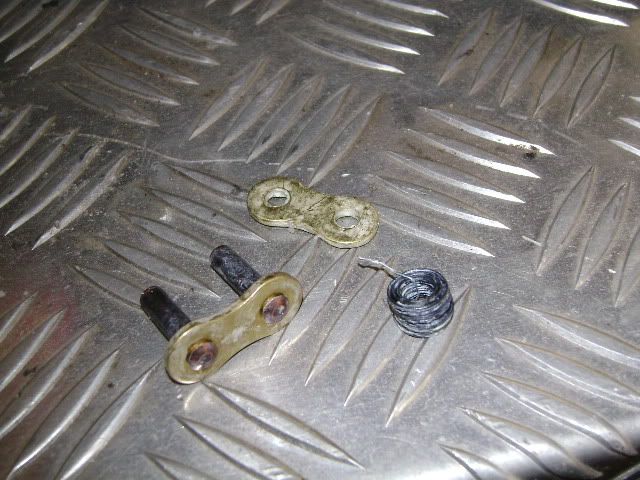
Place the X rings on the joining link ready for insertion, use extra lube at this stage, I use the high temp grease & place it inside the X rings, although the link & parts are lubed, you really need to pack in between the X rings & the link shafts

Insert the link & lube the shafts before fitting the link plate, make sure the X rings are centered, they should not move much because of the extra grease
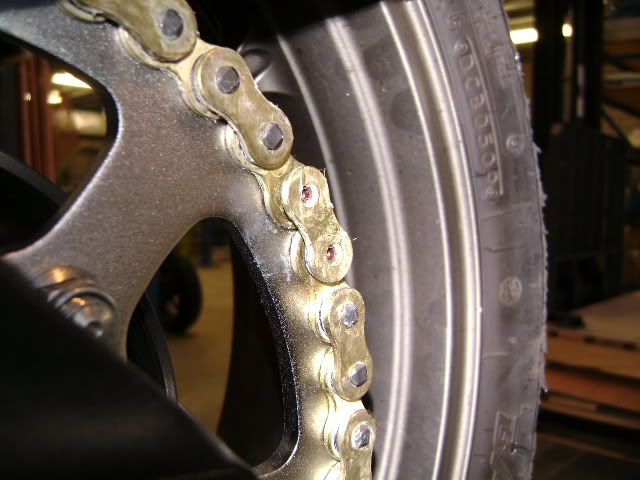
Use the chain press to compress the link, this can not be done with pliers or multigrips, this tool was $14 from the accessories store, The bolt is hollow & there is a depression in the opposite side, for this task I insert a ball bearing into the depression to push against the back of the pin. Basically you make sure the hollow in the bolt passes over the pin as it compresses the outer plate & link, it will not spring back once the tool is released.
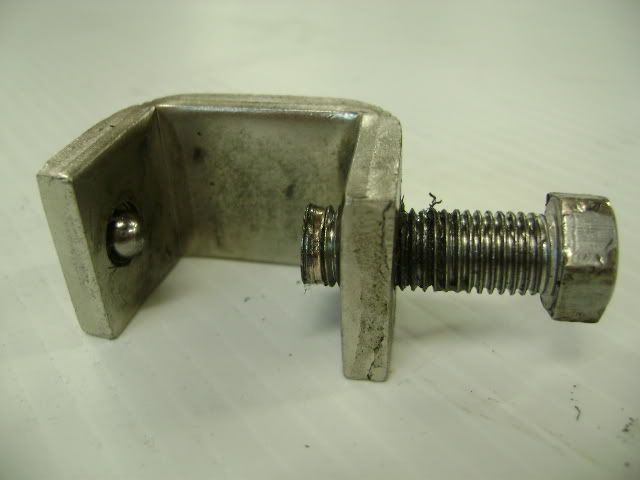
The pins should now be ready to fold over
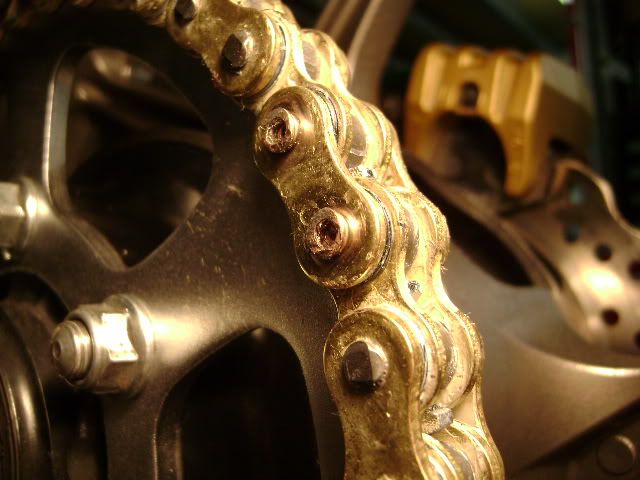
I use a Punch to spread out the end of the shafts, the punch has been shortened specifically for this use so I have bought a few & ground them to various lengths.
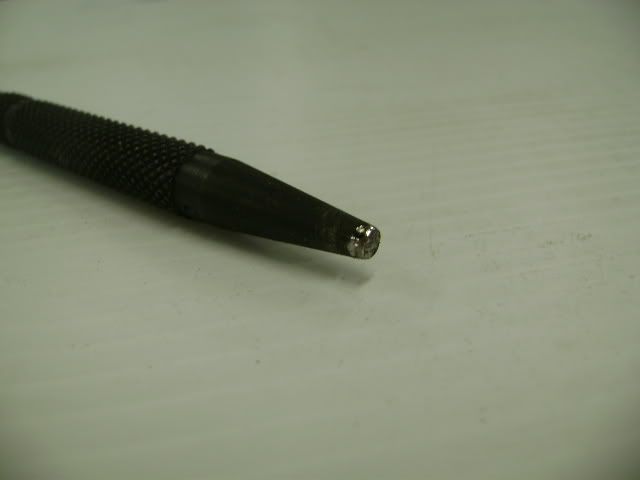
Spin the joining link around so you can get clear access from both sides & have your helper stand on the other side with the heavy steel bar
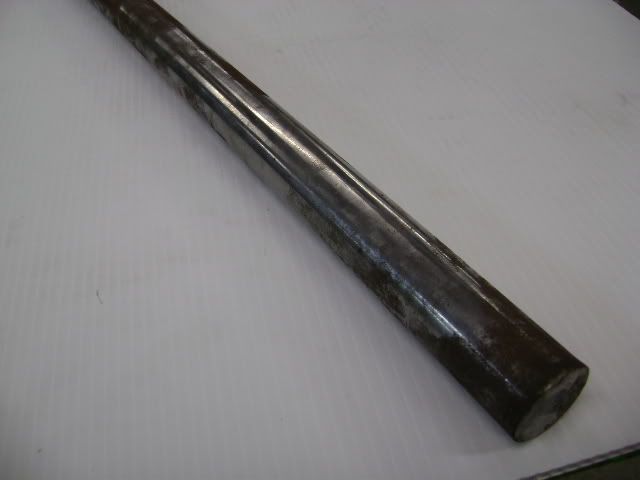
The steel bar is placed against the back of the pin while you use the punch to spread the end of the pins, this is the reason the ends of the joining link pins are hollow.
The end result should look like this
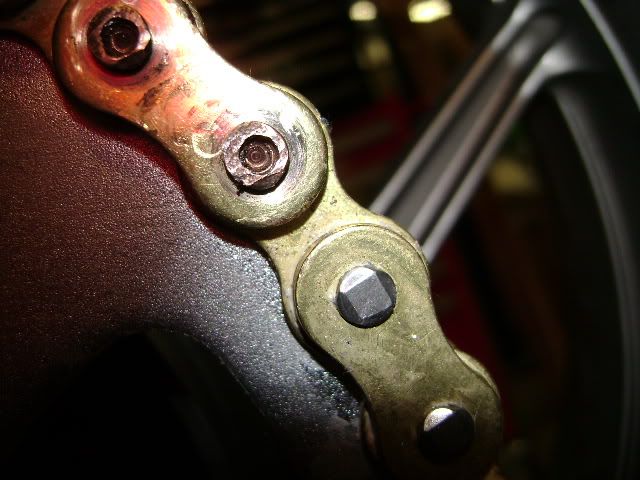
Now all the is left to do is adjust your chain tension from both sides using the freshly lubed bolts
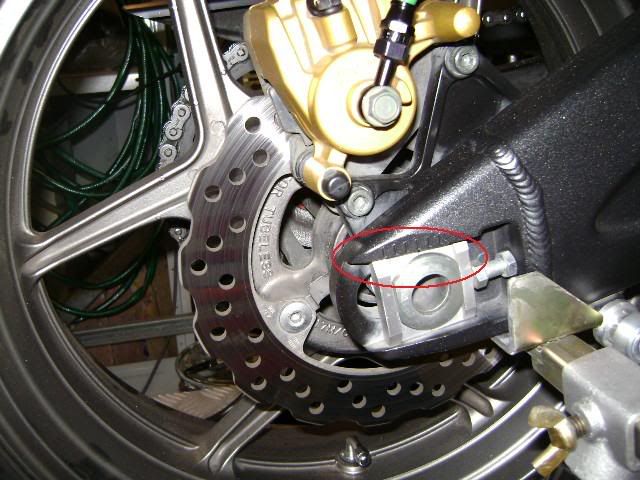
Make sure that both sides are the same

I string line the rear wheel to make sure the alignment is spot but to long a process to go into in this post.
I also have a helper sit on the bike to make sure the chain tension is perfect including any tight spots that may be present.
Tighten the locknuts on both sides, tighten the axel nut & replace the R clip

Now back to that front sprocket, it still needs to be tightened, put the bike back in gear & have your helper hold on the rear brake, use the rattle gut to tighten the locking nut then fold over the washer from 2 sides, this will be the last time this washer can be used

Replace the sprocket cover making sure the hoses are not kinked & the cover sits flush.
Check that you have tightened all bolts clean the bike & go for a long ride
Check the chain tension after a few hundred K’s as the chain will stretch a fair bit initially
You will notice that the factory lube will last a long time, but don’t get complacent with your new chain, keep it well lubed & adjusted frequently.


 the pics make it very easy to understand.
the pics make it very easy to understand.